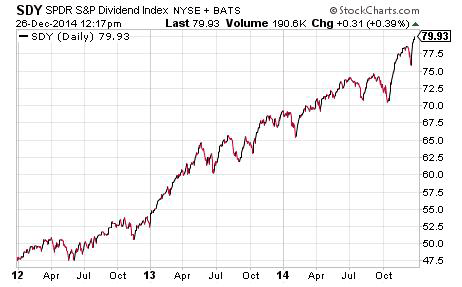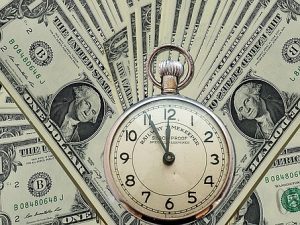Dividend Reinvestment Plans
Dividend reinvestment plans are a way you can unlock the power of compounding.
Dividend reinvestment plans compound your dividends, increase the number of shares of the dividend stocks in your portfolio, and exponentially drive your returns higher.
Do these dividend reinvestment plans, usually called a DRIP, make sense for you?
The DRIP takes the dividend you’ve been paid and buys more stock with it. Depending on how many shares you own, and how much the amount of the dividend turns out to be, you might get a fraction of a share, or you might get multiple shares.
A drip from a leaky faucet is exactly what hits your portfolio. Every quarter, when a dividend has been declared, you get a little more stock. Dividend reinvestment plans drip a slow and steady stream of income into your account, and it keeps dripping away as long as you own the dividend stocks.
But like just about everything else in the world of investing, there are pluses and minuses to think about.
How Dividend Reinvestment Plans Work
Your brokerage account is set up one of two ways.
When a dividend is paid, either the dividend payment goes into your core account as cash, or it is used to buy more shares of the stock.
If you’re not sure how your account is set up, give you’re broker a call and they’ll let you know.
If you want, you can decide to have one dividend stock you own reinvest the dividend paid, and another stock pays the dividend as cash. You make the call.
Want to make a smart decision? Here are the pluses and minuses of dividend reinvestment plans.
Dividend Reinvestment Plans Come With Pros And Cons
The big pro is that a dividend reinvestment strategy can easily triple your investment in less than 15 years.
And we’re not talking about a stock where the share price is soaring. We’re actually doing this with a safe, boring stock that plods along, a stock that is usually not even doing as well as the overall market.
Let’s work a couple of simple numbers to see how dividend reinvestment plans can triple your money in 15 years.
We buy a stock that we don’t expect to increase in value by more than 1% a year. (That’s about as modest and conservative an expectation as you can make.)
You start with $2,000.
Let’s say you buy this stock and it delivers a 4% yield. And let’s say that it has a dividend growth rate of 8%.
After 5 years, you’ve got $2,639. After 10 years, you’ve got $3,812, and after 20 years, $12,146.
How does this happen when the stock price just plods along and increases by a measly 1% a year?
Compounding. The dividends are buying you more of the stock. The new shares you buy pay you more dividends. The whole thing snowballs.
The key is not the growth of the stock price. It’s the growth of the dividend.
So when you’re looking at the pros and cons of dividend reinvestment plans, the pros will be long term, consistent rewards. The cons… don’t expect to make a fortune overnight, and don’t keep reinvesting dividend payments in a stock that isn’t growing its dividends.
Focus on the opportunity for dividend growth. Don’t chase yield. Yield can bounce around and go up and down in a short period of time.
Dividend growth can be consistent. You’ll find stocks that constantly and reliably grow their dividends on the lineup of the S&P 500 Dividend Aristocrats.
Meet the S&P 500 Dividend Aristocrats.
But even though they’re attractive, there’s an important question about DRIPS to keep in mind.
When do you get to use the money?
Dividend Reinvestment Plans For Investors Who Need Income Right Now
What if you can’t wait 20 years?
What if you need income right now, or a few years from now?
If you’re planning your retirement, does dividend reinvestment make any sense?
Absolutely, and here’s why.
If you are 61, chances are you’ll be around for a while.
Reinvesting dividends for some of your stocks so you can triple your money in 15 years is smart planning. Why not have a nice next egg you won’t need until you’re 76?
Just because you turn 65, your asset allocation, the way your portfolio is divided between stocks and bonds doesn’t turn its back on stocks… especially dividend stocks.
So if you need income right now, fine. Use the dividends from some of your stocks for income, and then reinvest the dividends you don’t need.
Along the way, you’ll also be rewarded with a nice increase in the stock price.
Here’s how the ETF for SDY, which tracks the S&P 500 Dividend Aristocrats, has performed over the past 3 years.

Your Best Move For A Dividend Reinvestment Plan
Pull out a calendar and figure out when you’ll want the income.
The longer you can hold off, and spin off the income from your dividend stocks into a DRIP, a Dividend Reinvestment Plan, the better.
When you do this simple planning, you’ll probably discover that there’s some income you’ll want either right now or fairly soon, and some you won’t need for a while. Whatever income you don’t need for ten years, give serious though to using this for a Dividend Reinvestment Plan.
Whatever move you make, you’ll have a solid portfolio of dividend stocks quenching your thirst for income.
——————————————————————————————
Michael Jennings writes and edits DividendStocksResearch.com. Sign up for our free dividend reports and dividend newsletter at https://dividendstocksresearch.com/free-sign-up. We’ll show you how to create regular income by investing in dividend stocks, easily, step-by-step.
Category: Dividend Basics





